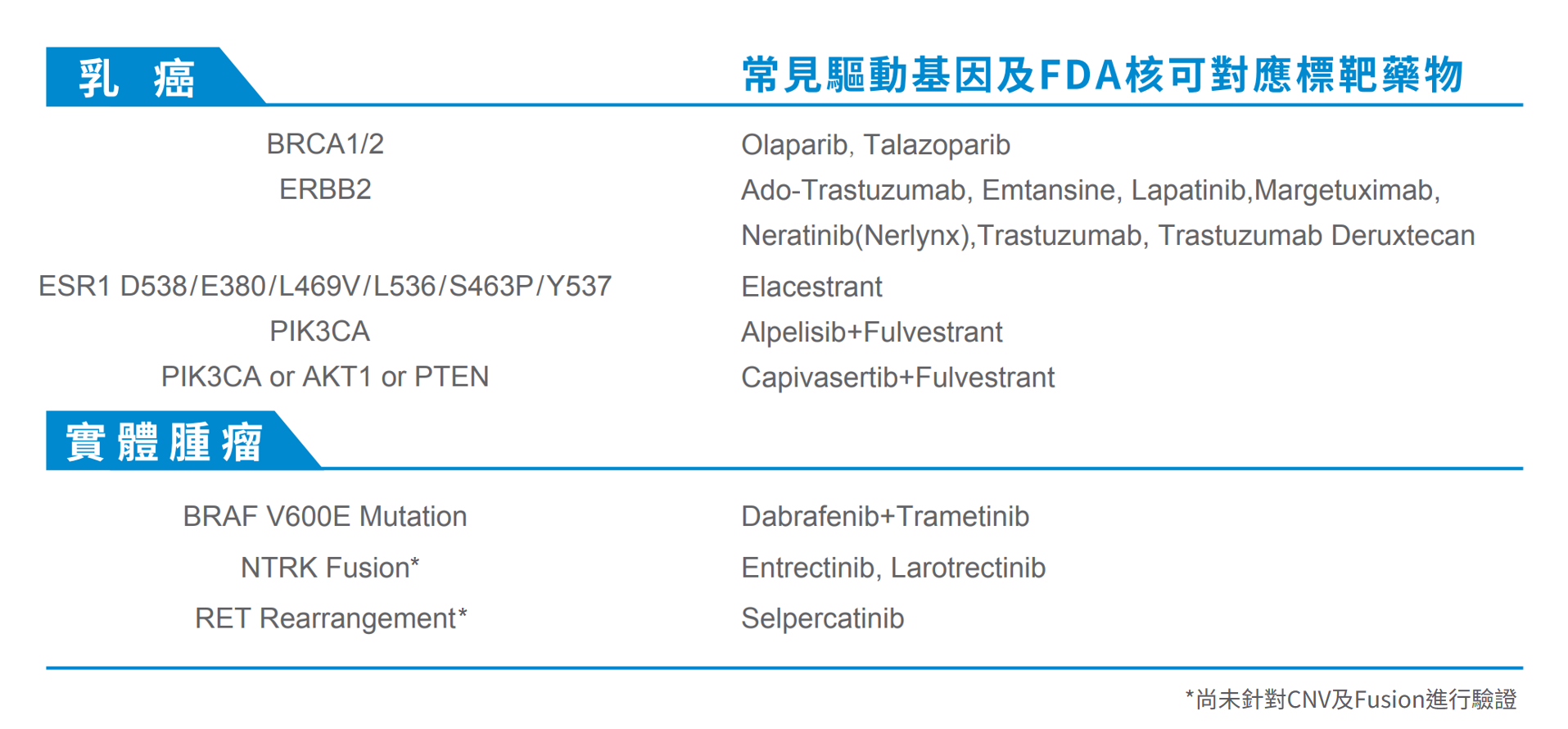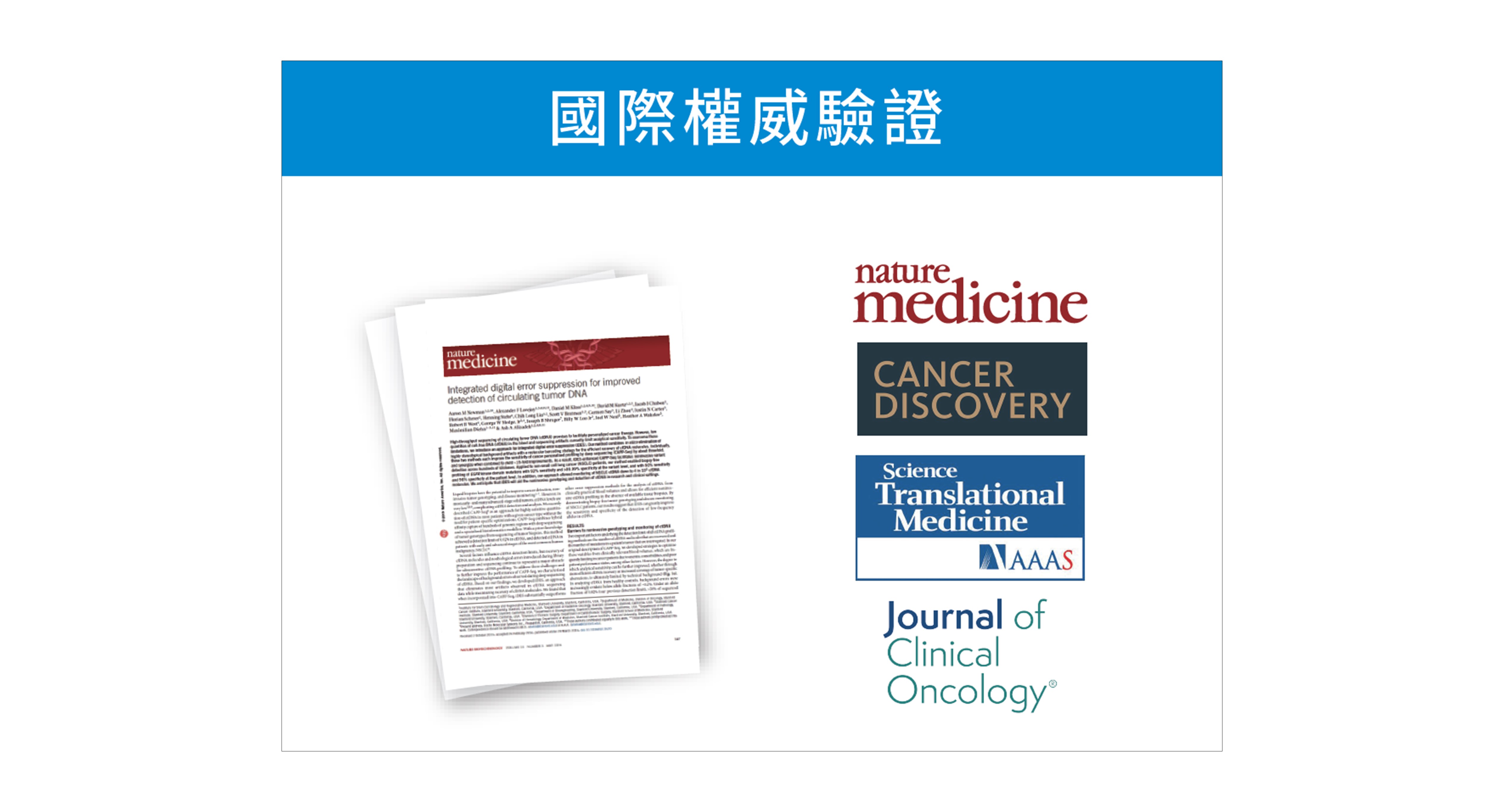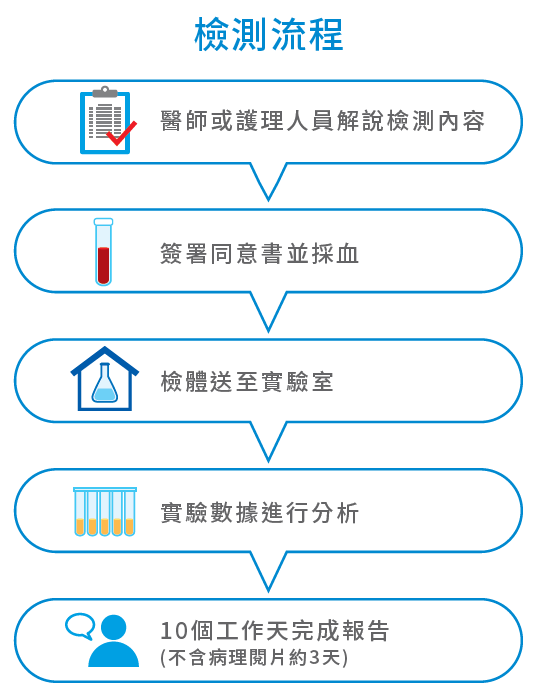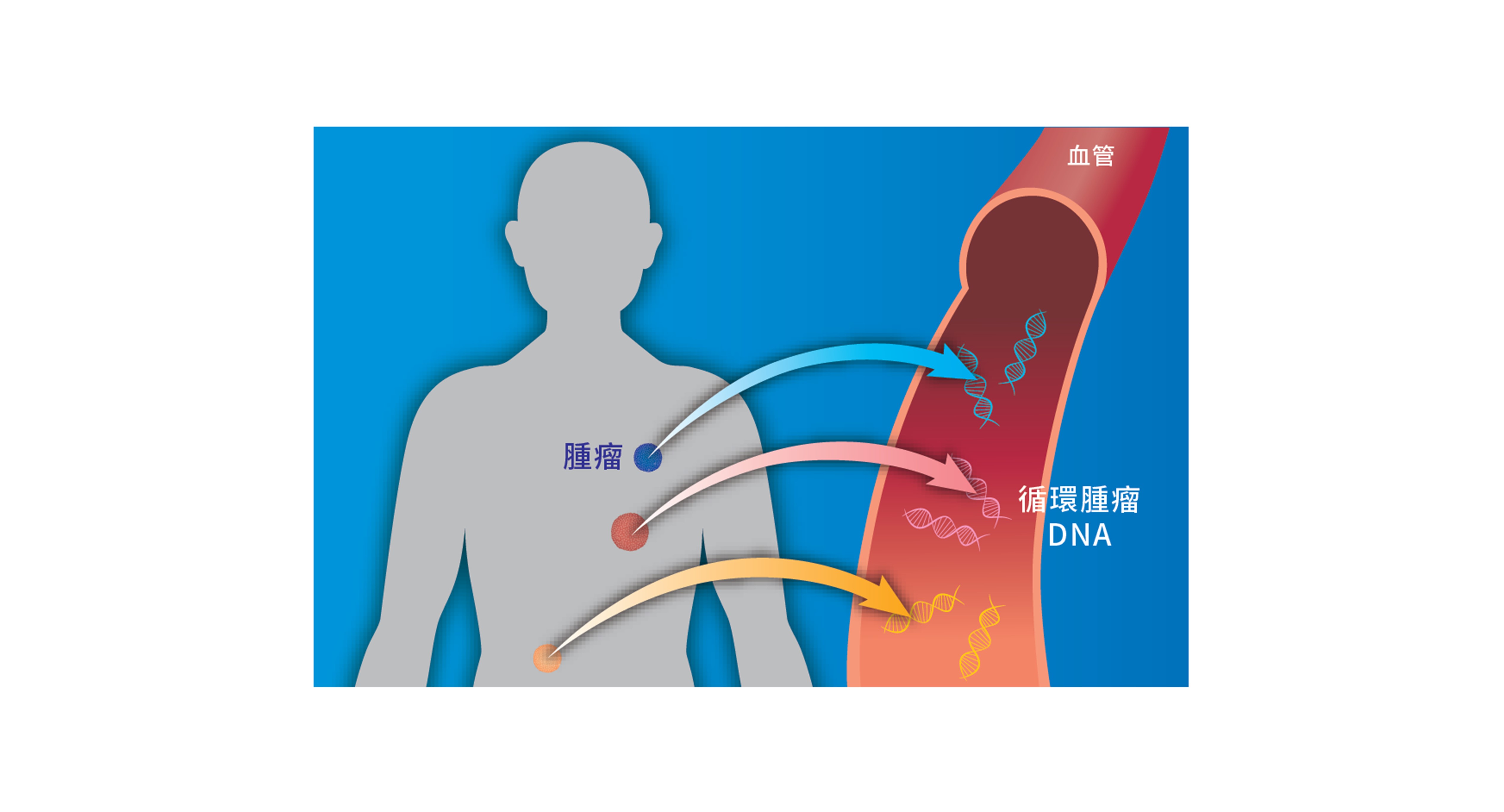慧智癌監控基因檢測-乳癌
服務介紹
■ 基因突變與乳癌標靶治療
隨著醫療科技的進步,癌症精準治療的概念已逐步成熟,透過基因檢測了解癌症的突變,就可以針對病人的癌症對症下藥。慧智癌監控-乳癌運用次世代基因定序(Next Generation Sequencing, NGS)技術,以透過一次檢測了解數十種不同癌症基因的突變,提供病患精準又有效率的用藥資訊。
根據美國國家綜合癌症網絡(National Comprehensive Cancer Network,NCCN)提出的乳癌標靶用藥指引,許多不同的基因突變都有適當的標靶治療,透過慧智癌監控-乳癌,可以找出最適合的治療方式。

■ 檢測技術可靠: 國際權威驗證
慧智癌監控利用羅氏最新次世代定序CAPP-Seq (Cancer Personalized Profiling by Deep Sequencing)結合專有的綜合數位誤差校正方法(integrated digital error suppression, iDES),因此降低了背景值的干擾,從而提高檢測的特異性,獲得更精確的檢測結果。

人體中大部分的DNA都存在細胞裡,當細胞死亡後會將DNA釋放到血液中,形成游離DNA或 cfDNA (cell free DNA)。同樣的,當腫瘤細胞死亡後,也會釋放DNA到血液中,這些DNA即為循環腫瘤DNA(circulating tumor DNA, ctDNA)。
而慧智癌監控為因應臨床的需求,提供以下兩種不同的檢體類別:
(1)石蠟切片: 以組織檢體直接進行基因檢測,符合健保申請規範(2)血液、體液: 進行液態切片(Liquid Biopsy)分析,以非侵入的方式取得檢體,並分析。

檢測說明
慧智癌監控-乳癌專為乳癌病患設計,涵蓋乳癌相關的26個基因。

適用對象
◆ 乳癌病患
◆ 欲找尋標靶治療相關臨床試驗之病患
◆ 欲評估療效、術後輔助治療、抗藥性突變及監控復發之病患。
檢測流程

慧智優勢


